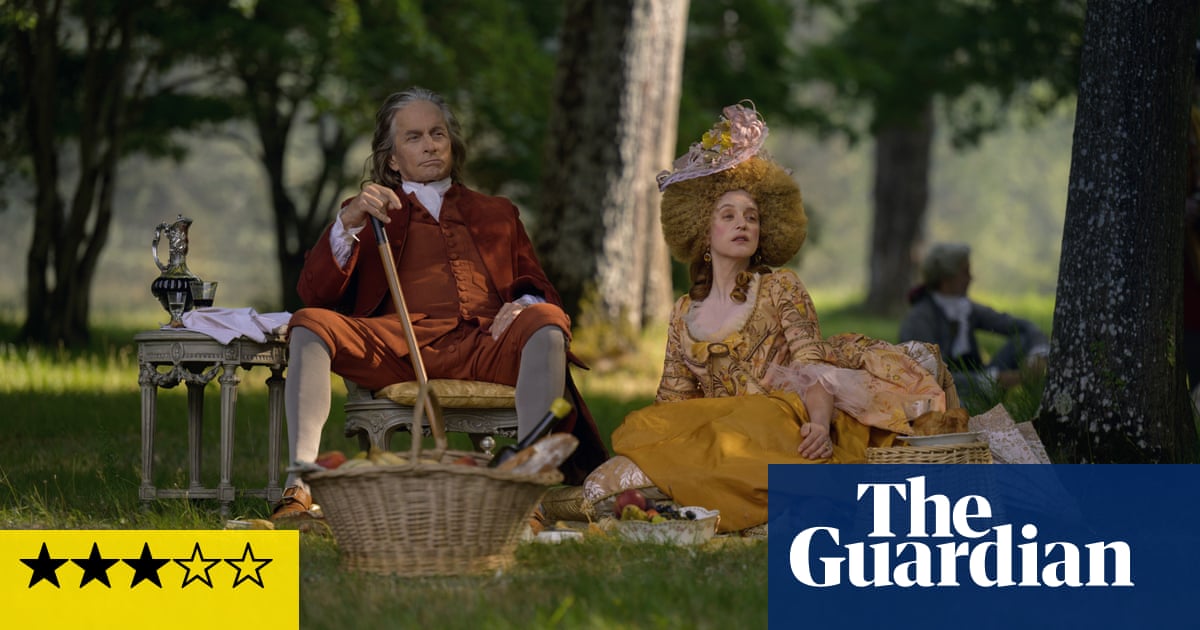
Iremember reading Margaret Atwood’s Alias Grace many years ago and feeling almost as if I was being beaten about the head with its brilliance. I loved it, admired it, wanted to tell all my friends about it, but I had to take a few days to recover from a sort of cudgelling-by-quality first.
I feel much the same about Lady in the Lake. This is a seven-part adaptation of the 2019 bestseller of the same name by Laura Lippman, an exceptional thriller writer, that stars Natalie Portman in her first small-screen role and marks visionary director Alma Har’el’s first time as a showrunner. It co-stars Moses Ingram, whose faultless, mesmerising performance should surely sweep the board come awards season. The whole endeavour is a dense, clever, impeccably written, acted, shot and scored offering that is designed to be consumed slowly, episode by episode, not binged. You may finish each one feeling slightly battered and exhausted – perhaps more impressed than moved, but that’s OK. Give it a few days to bed in and the love will come.
This is the story of two Baltimore women in the 1960s: affluent white Jewish housewife and mother Maddie Schwartz (Portman) and Black, all-but-single mother Cleo (Ingram) who is working three jobs to try to lift herself and her children out of the life of struggle that otherwise beckons, and away from the temptations and dangers offered by the underbelly of the city.
Their lives begin to converge when a child, Tessie, goes missing at the Thanksgiving Day parade. The indifference of Maddie’s husband, Milton (Brett Gelman), triggers a fury in his long-frustrated wife, who ends up finding Tessie’s body herself and leaving Milton and her son, Seth (Noah Jupe), to start afresh. The only place she can afford on her own is in a Black area and even that requires faking a robbery of her insured jewellery when she falls behind in rent. As the investigation into Tessie’s murder continues, Maddie’s latent journalistic ambitions stir and she begins to claw her way into the favour of the Baltimore Sun.
Cleo’s part is much expanded from the book and now forms at least half the screentime and the story. She has one foot in Baltimore’s criminal community (as the bookkeeper for Shell Gordon, who runs the city’s illegal gambling operation, and a waitress at one of his clubs) and the other in the above-board world, working as a model in a department store and volunteering for Myrtle Summer (Angela Robinson), the state’s first Black female senator. Cleo hopes to get a salaried post with her, but Summer tells her that white donors have threatened to withdraw support if she employs someone connected with Gordon. Cleo’s options narrow and her anger and desperation rise.
Lady in the Lake spends the first two episodes largely world- and character-building. It’s meticulous and valuable, but it is also a slight relief when the action starts up in the third episode and the story proper begins – not least because Portman (whom I generally find a fairly uninteresting proposition as an actor) begins to shine and to hold her own against the extraordinary Ingram. Maddie inveigles her way into the killer’s life and that of his mother and uses the relationship and the information gained to establish her reporter bona fides. When – spoiler alert! – the body of Cleo is discovered in the fountain of a local park, Maddie repeats the trick and parlays it into the beginning of a successful career.
Lady in the Lake becomes many things beyond an intricate murder-mystery. It is a snapshot of civil rights-era Baltimore, a portrait of racial prejudice, sexual oppression and the intersection of both, and – via Maddie’s ruthlessness and her frequent blindness to her neighbours’ lives and experiences – an examination of how oppression does not necessarily inoculate you against becoming the oppressor. The drama asks what true liberation for all might look like, and if it can ever be accomplished for one without cost to another.
Lady in the Lake is also an incredibly sumptuous and fearless aesthetic experience, combining not just the meticulous recreation of the 60s, but also of Cleo’s childhood in the 40s and Maddie’s formative experiences a decade or so later. It uses dream sequences, musical interludes, flashbacks and assorted other devices that in lesser hands can be – and frequently are – mere irritants to flesh out its characters and questions more fully.
It is altogether masterly. And if you don’t have room to love it while you bow down before its technical and dramatic proficiency, that’s fine. As I say – give yourself time to digest it. We’re not used to fare this rich. The love will come.












